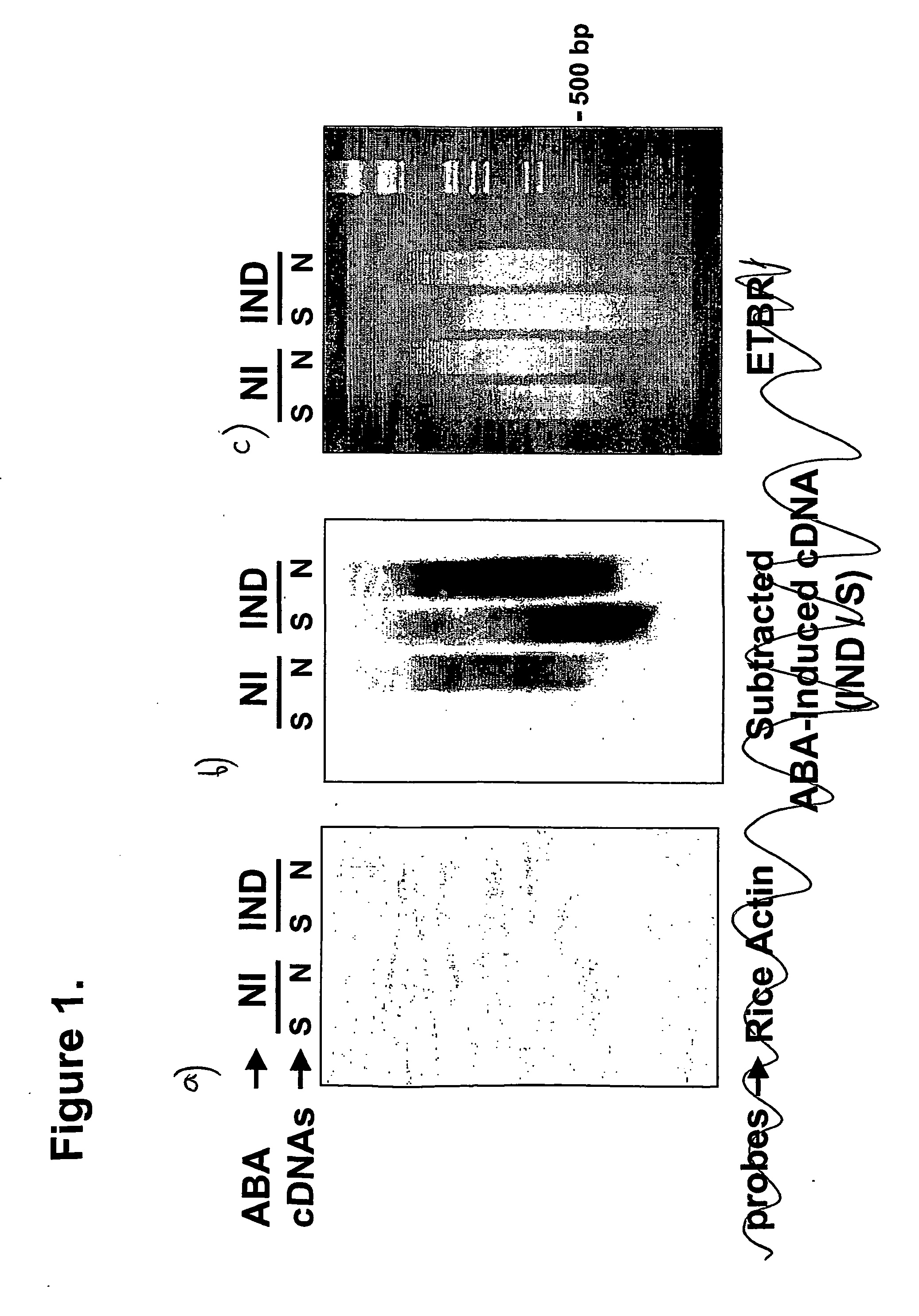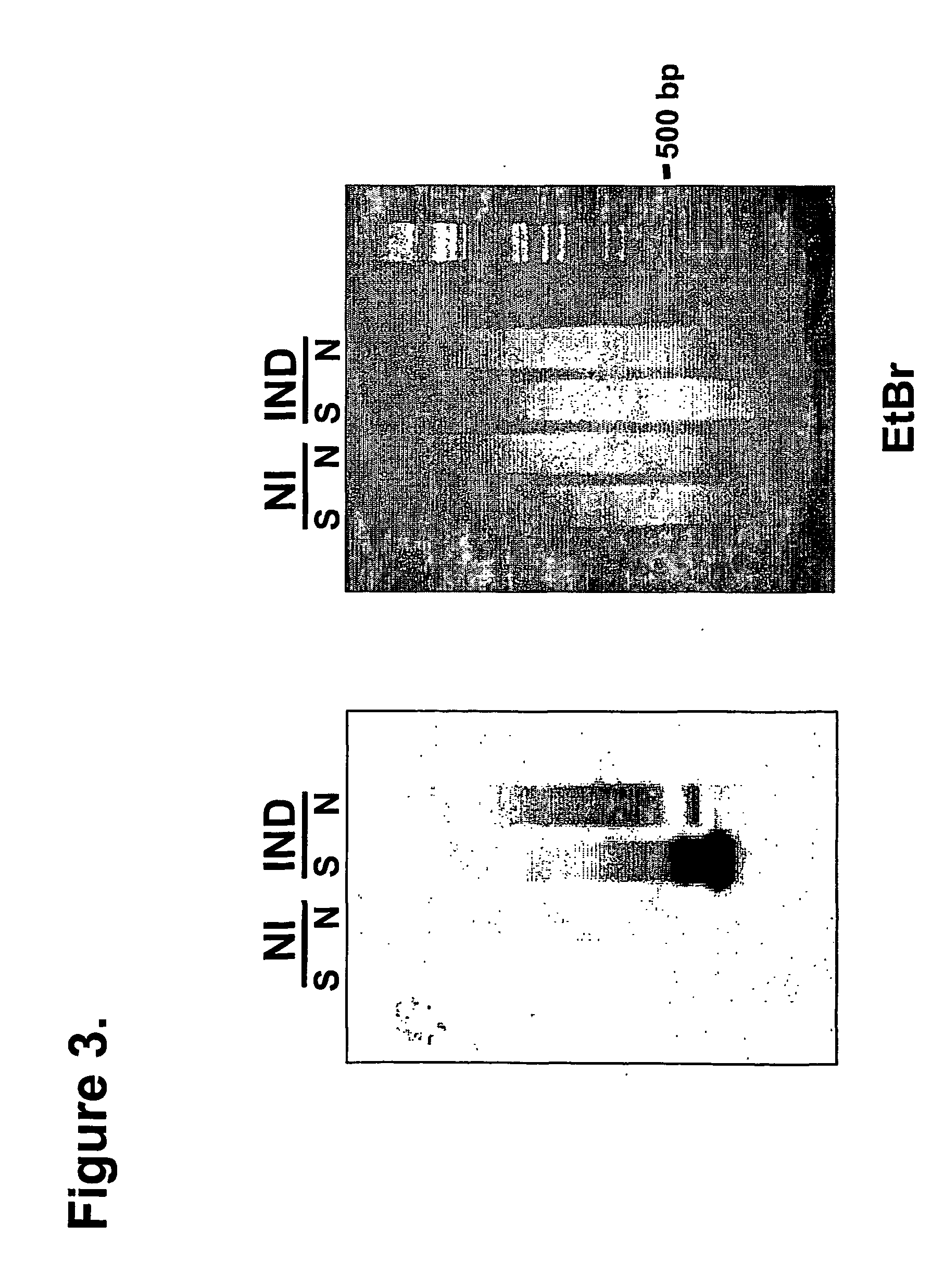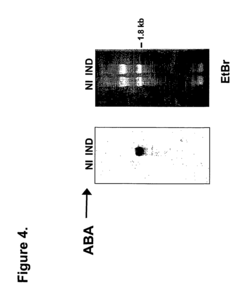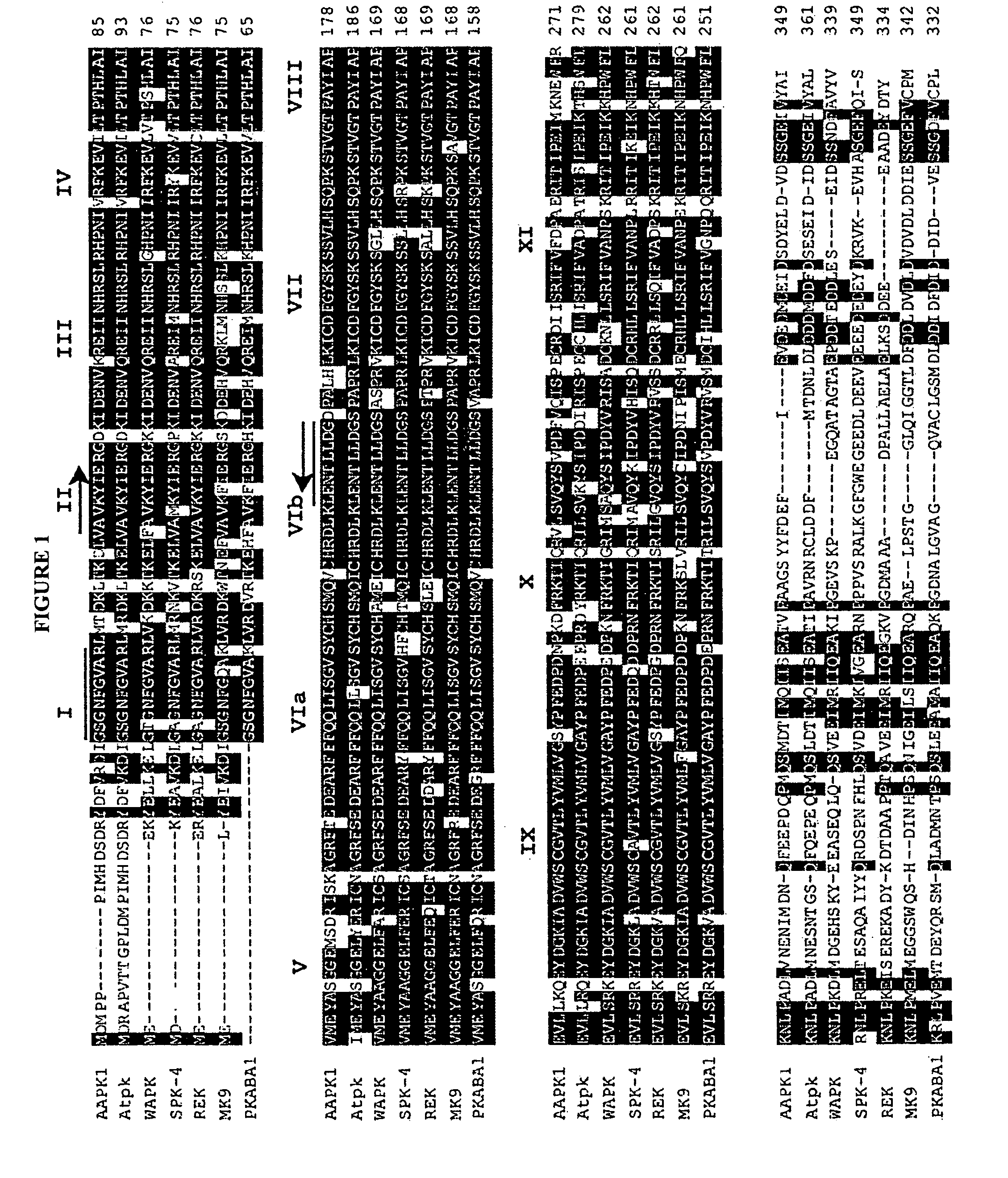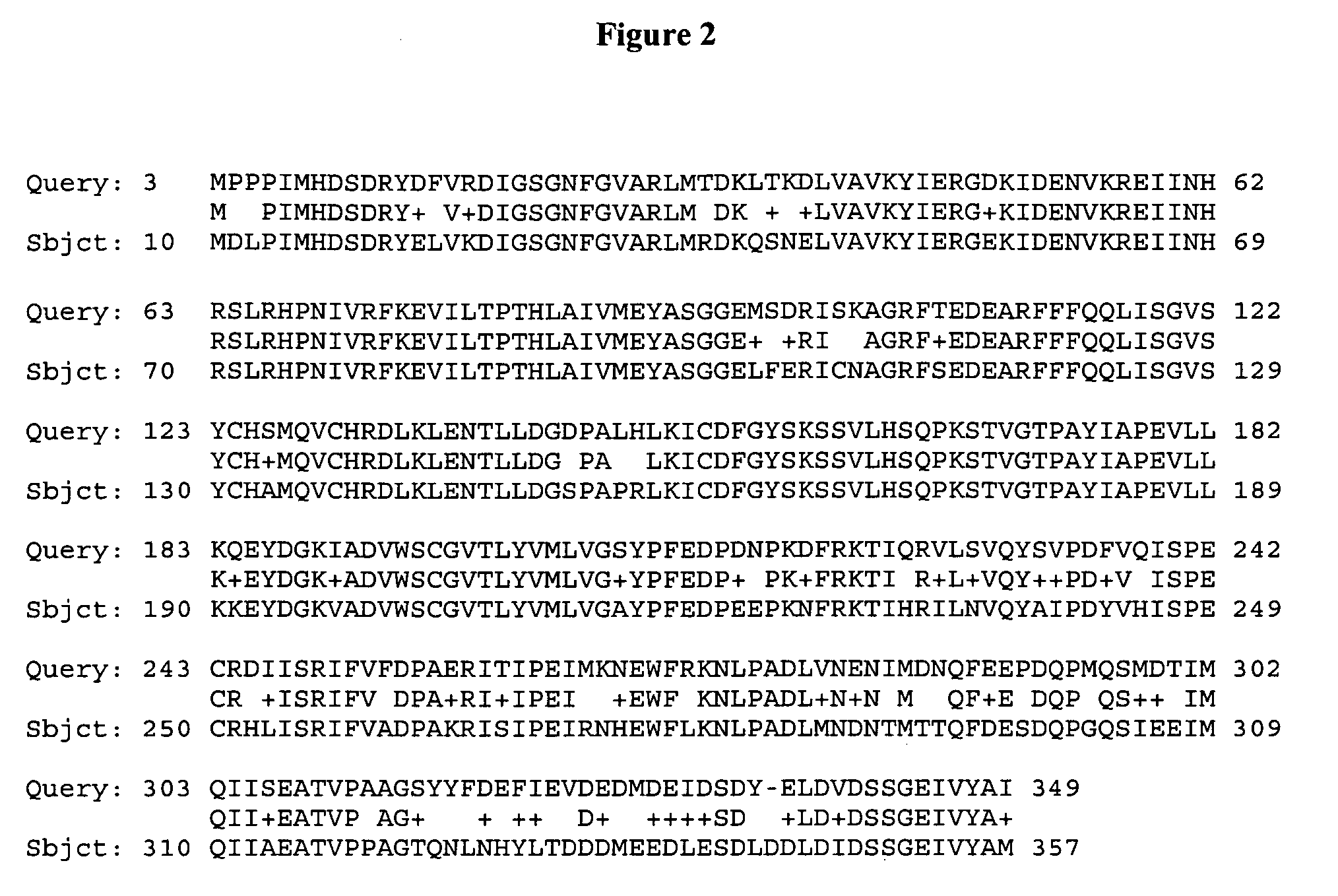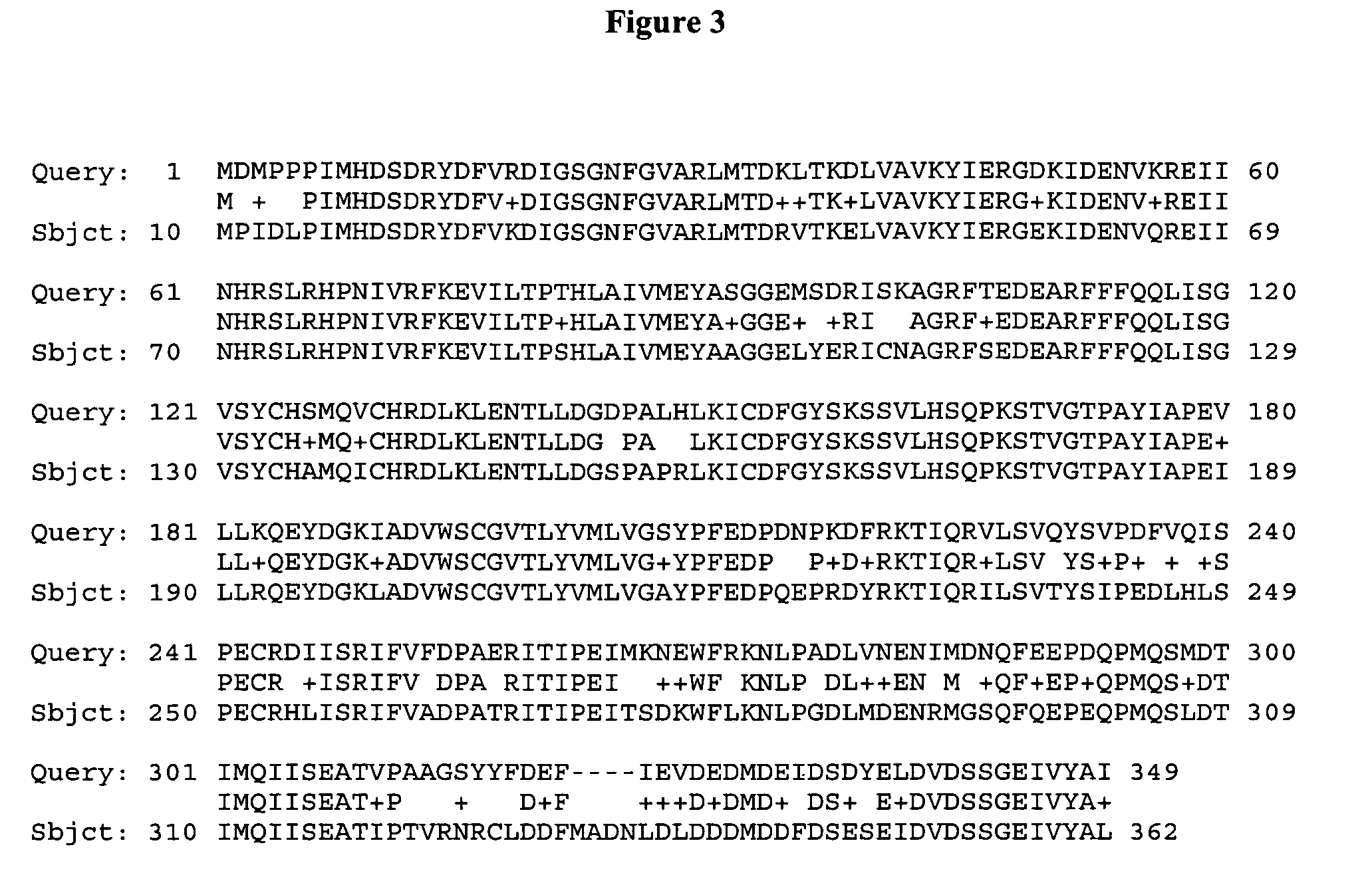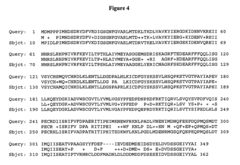Strategies to Manipulate Abscisic Acid for Crop Genetic Improvement
JUL 14, 20259 MIN READ
Generate Your Research Report Instantly with AI Agent
Patsnap Eureka helps you evaluate technical feasibility & market potential.
ABA Manipulation Background
Abscisic acid (ABA) is a crucial plant hormone that plays a vital role in regulating various physiological processes, including seed dormancy, germination, and stress responses. The manipulation of ABA has emerged as a promising strategy for crop genetic improvement, aiming to enhance plant resilience and productivity in the face of environmental challenges.
The discovery of ABA dates back to the 1960s when researchers identified it as a growth inhibitor in cotton bolls. Since then, extensive research has unveiled its multifaceted functions in plant development and stress adaptation. ABA's significance in crop improvement has gained increasing attention due to its central role in mediating plant responses to abiotic stresses such as drought, salinity, and extreme temperatures.
The evolution of ABA manipulation strategies has been closely linked to advancements in molecular biology and genetic engineering techniques. Early approaches focused on exogenous application of ABA or its synthetic analogs to enhance stress tolerance. However, these methods often resulted in undesired side effects and limited long-term efficacy. The advent of genetic engineering opened new avenues for more precise and sustainable ABA manipulation.
Recent years have witnessed significant breakthroughs in understanding the ABA signaling pathway and its regulatory networks. The identification of key components, including ABA receptors, protein phosphatases, and transcription factors, has provided molecular targets for genetic manipulation. This knowledge has paved the way for developing transgenic crops with enhanced ABA sensitivity or altered ABA biosynthesis and catabolism.
The potential applications of ABA manipulation in crop improvement are diverse and promising. By fine-tuning ABA levels or signaling, researchers aim to develop crops with improved drought tolerance, water-use efficiency, and yield stability under adverse conditions. Additionally, ABA manipulation strategies have shown potential in enhancing seed quality, prolonging shelf life of fruits and vegetables, and improving plant architecture for optimal resource allocation.
Despite the progress made, several challenges remain in effectively manipulating ABA for crop genetic improvement. These include the complexity of ABA signaling networks, potential trade-offs between stress tolerance and growth, and the need for precise spatiotemporal control of ABA levels. Addressing these challenges requires interdisciplinary approaches combining molecular biology, systems biology, and advanced breeding techniques.
As research in this field continues to advance, new strategies are emerging, such as CRISPR-Cas9-mediated genome editing for targeted modification of ABA-related genes and the development of synthetic ABA analogs with improved stability and specificity. These innovative approaches hold great promise for revolutionizing crop improvement and contributing to global food security in the face of climate change and increasing environmental pressures.
The discovery of ABA dates back to the 1960s when researchers identified it as a growth inhibitor in cotton bolls. Since then, extensive research has unveiled its multifaceted functions in plant development and stress adaptation. ABA's significance in crop improvement has gained increasing attention due to its central role in mediating plant responses to abiotic stresses such as drought, salinity, and extreme temperatures.
The evolution of ABA manipulation strategies has been closely linked to advancements in molecular biology and genetic engineering techniques. Early approaches focused on exogenous application of ABA or its synthetic analogs to enhance stress tolerance. However, these methods often resulted in undesired side effects and limited long-term efficacy. The advent of genetic engineering opened new avenues for more precise and sustainable ABA manipulation.
Recent years have witnessed significant breakthroughs in understanding the ABA signaling pathway and its regulatory networks. The identification of key components, including ABA receptors, protein phosphatases, and transcription factors, has provided molecular targets for genetic manipulation. This knowledge has paved the way for developing transgenic crops with enhanced ABA sensitivity or altered ABA biosynthesis and catabolism.
The potential applications of ABA manipulation in crop improvement are diverse and promising. By fine-tuning ABA levels or signaling, researchers aim to develop crops with improved drought tolerance, water-use efficiency, and yield stability under adverse conditions. Additionally, ABA manipulation strategies have shown potential in enhancing seed quality, prolonging shelf life of fruits and vegetables, and improving plant architecture for optimal resource allocation.
Despite the progress made, several challenges remain in effectively manipulating ABA for crop genetic improvement. These include the complexity of ABA signaling networks, potential trade-offs between stress tolerance and growth, and the need for precise spatiotemporal control of ABA levels. Addressing these challenges requires interdisciplinary approaches combining molecular biology, systems biology, and advanced breeding techniques.
As research in this field continues to advance, new strategies are emerging, such as CRISPR-Cas9-mediated genome editing for targeted modification of ABA-related genes and the development of synthetic ABA analogs with improved stability and specificity. These innovative approaches hold great promise for revolutionizing crop improvement and contributing to global food security in the face of climate change and increasing environmental pressures.
Market Demand Analysis
The market demand for strategies to manipulate abscisic acid (ABA) for crop genetic improvement is driven by the increasing global need for food security and sustainable agriculture. As climate change continues to pose significant challenges to crop production, there is a growing interest in developing crops that can withstand abiotic stresses such as drought, salinity, and extreme temperatures.
ABA plays a crucial role in plant stress responses, making it a prime target for genetic manipulation to enhance crop resilience. The global market for stress-tolerant crops is expected to grow substantially in the coming years, with drought-tolerant varieties being particularly sought after. This demand is fueled by the increasing frequency and severity of droughts in major agricultural regions worldwide.
The agricultural biotechnology market, which encompasses technologies for ABA manipulation, is projected to expand significantly. This growth is attributed to the rising adoption of genetically modified crops and the increasing investments in research and development of stress-tolerant varieties. Developing countries, particularly in regions prone to climate-related crop losses, are showing a keen interest in adopting these technologies to safeguard their food production.
Major agrochemical and seed companies are actively pursuing research in ABA-related crop improvements, recognizing the potential for substantial market gains. These companies are investing heavily in developing proprietary technologies and crop varieties that leverage ABA manipulation strategies. The competition in this space is intensifying, driving innovation and creating opportunities for smaller biotech firms and research institutions.
The market for ABA-manipulated crops extends beyond just improving stress tolerance. There is growing interest in using these strategies to enhance crop quality, improve water use efficiency, and optimize plant growth and development. This diversification of applications is expanding the potential market reach of ABA-related technologies.
Consumer awareness and acceptance of genetically modified crops remain critical factors influencing market demand. While there is increasing recognition of the need for climate-resilient agriculture, regulatory hurdles and public perception issues in some regions may impact the adoption rate of crops developed through ABA manipulation strategies.
The seed market, particularly for stress-tolerant varieties, is expected to see significant growth. Farmers are increasingly willing to pay premium prices for seeds that offer improved yield stability under challenging environmental conditions. This trend is particularly pronounced in regions facing recurrent drought issues, creating a strong market pull for ABA-manipulated crop varieties.
ABA plays a crucial role in plant stress responses, making it a prime target for genetic manipulation to enhance crop resilience. The global market for stress-tolerant crops is expected to grow substantially in the coming years, with drought-tolerant varieties being particularly sought after. This demand is fueled by the increasing frequency and severity of droughts in major agricultural regions worldwide.
The agricultural biotechnology market, which encompasses technologies for ABA manipulation, is projected to expand significantly. This growth is attributed to the rising adoption of genetically modified crops and the increasing investments in research and development of stress-tolerant varieties. Developing countries, particularly in regions prone to climate-related crop losses, are showing a keen interest in adopting these technologies to safeguard their food production.
Major agrochemical and seed companies are actively pursuing research in ABA-related crop improvements, recognizing the potential for substantial market gains. These companies are investing heavily in developing proprietary technologies and crop varieties that leverage ABA manipulation strategies. The competition in this space is intensifying, driving innovation and creating opportunities for smaller biotech firms and research institutions.
The market for ABA-manipulated crops extends beyond just improving stress tolerance. There is growing interest in using these strategies to enhance crop quality, improve water use efficiency, and optimize plant growth and development. This diversification of applications is expanding the potential market reach of ABA-related technologies.
Consumer awareness and acceptance of genetically modified crops remain critical factors influencing market demand. While there is increasing recognition of the need for climate-resilient agriculture, regulatory hurdles and public perception issues in some regions may impact the adoption rate of crops developed through ABA manipulation strategies.
The seed market, particularly for stress-tolerant varieties, is expected to see significant growth. Farmers are increasingly willing to pay premium prices for seeds that offer improved yield stability under challenging environmental conditions. This trend is particularly pronounced in regions facing recurrent drought issues, creating a strong market pull for ABA-manipulated crop varieties.
ABA Tech Challenges
The manipulation of abscisic acid (ABA) for crop genetic improvement faces several significant technical challenges. One of the primary obstacles is the complex nature of ABA biosynthesis and signaling pathways. These pathways involve multiple genes and regulatory elements, making it difficult to precisely control ABA levels without affecting other plant processes.
Another major challenge lies in the tissue-specific and temporal regulation of ABA. Crops require different levels of ABA at various growth stages and in different plant tissues. Achieving this fine-tuned control through genetic manipulation is extremely challenging and requires sophisticated gene editing techniques and promoter systems.
The pleiotropic effects of ABA pose another significant hurdle. ABA influences numerous physiological processes beyond stress responses, including seed dormancy, germination, and fruit ripening. Altering ABA levels for improved stress tolerance may inadvertently affect these other processes, potentially leading to undesired agronomic traits.
Environmental variability presents a further challenge in ABA manipulation strategies. The effectiveness of genetically engineered ABA responses can vary greatly depending on environmental conditions, making it difficult to develop crops with consistently improved performance across diverse agricultural settings.
The development of ABA-insensitive mutants has been a valuable tool in understanding ABA signaling, but translating these findings into practical crop improvements remains challenging. Many ABA-insensitive mutants exhibit reduced fitness under normal growing conditions, limiting their direct application in agriculture.
Genetic diversity among crop species and varieties adds another layer of complexity. ABA-related genes and their regulatory elements can vary significantly between species and even between cultivars of the same species. This diversity necessitates the development of species-specific and potentially cultivar-specific strategies for ABA manipulation.
Lastly, the public perception and regulatory hurdles associated with genetically modified crops present significant challenges in implementing ABA manipulation strategies. Developing crops with altered ABA pathways that meet both regulatory requirements and consumer acceptance is a complex and time-consuming process.
Another major challenge lies in the tissue-specific and temporal regulation of ABA. Crops require different levels of ABA at various growth stages and in different plant tissues. Achieving this fine-tuned control through genetic manipulation is extremely challenging and requires sophisticated gene editing techniques and promoter systems.
The pleiotropic effects of ABA pose another significant hurdle. ABA influences numerous physiological processes beyond stress responses, including seed dormancy, germination, and fruit ripening. Altering ABA levels for improved stress tolerance may inadvertently affect these other processes, potentially leading to undesired agronomic traits.
Environmental variability presents a further challenge in ABA manipulation strategies. The effectiveness of genetically engineered ABA responses can vary greatly depending on environmental conditions, making it difficult to develop crops with consistently improved performance across diverse agricultural settings.
The development of ABA-insensitive mutants has been a valuable tool in understanding ABA signaling, but translating these findings into practical crop improvements remains challenging. Many ABA-insensitive mutants exhibit reduced fitness under normal growing conditions, limiting their direct application in agriculture.
Genetic diversity among crop species and varieties adds another layer of complexity. ABA-related genes and their regulatory elements can vary significantly between species and even between cultivars of the same species. This diversity necessitates the development of species-specific and potentially cultivar-specific strategies for ABA manipulation.
Lastly, the public perception and regulatory hurdles associated with genetically modified crops present significant challenges in implementing ABA manipulation strategies. Developing crops with altered ABA pathways that meet both regulatory requirements and consumer acceptance is a complex and time-consuming process.
Current ABA Strategies
01 Genetic modification of ABA biosynthesis and signaling pathways
Researchers are focusing on modifying genes involved in abscisic acid (ABA) biosynthesis and signaling pathways to improve crop stress tolerance and yield. This approach involves identifying key genes and regulatory elements in the ABA pathway and using genetic engineering techniques to enhance their expression or function in crop plants.- Genetic modification of ABA biosynthesis and signaling pathways: Researchers are focusing on modifying genes involved in abscisic acid (ABA) biosynthesis and signaling pathways to improve crop stress tolerance and yield. This approach involves identifying key genes and regulatory elements in the ABA pathway and using genetic engineering techniques to enhance their expression or function in crop plants.
- Development of ABA-responsive transgenic crops: Scientists are creating transgenic crops with enhanced responsiveness to ABA, leading to improved drought tolerance and water use efficiency. This involves introducing or modifying genes that regulate ABA-mediated responses, such as stomatal closure and root growth, to optimize plant performance under water-limited conditions.
- ABA-based crop protection and growth regulation: Researchers are developing ABA-based crop protection and growth regulation strategies, including the use of ABA analogs or synthetic compounds that mimic ABA's effects. These approaches aim to enhance crop resilience to environmental stresses and improve overall plant growth and development.
- Manipulation of ABA receptors and downstream signaling components: Studies are focusing on modifying ABA receptors and downstream signaling components to fine-tune plant responses to environmental stresses. This approach involves identifying and engineering key proteins in the ABA signaling cascade to optimize crop performance under various stress conditions.
- Integration of ABA-related traits in crop breeding programs: Breeders are incorporating ABA-related traits into crop improvement programs using both traditional breeding methods and modern genomic approaches. This involves selecting for desirable ABA-mediated traits, such as improved drought tolerance and water use efficiency, to develop new crop varieties with enhanced stress resilience and productivity.
02 Development of ABA-responsive transgenic crops
Scientists are creating transgenic crops with enhanced responsiveness to ABA, leading to improved drought tolerance and water use efficiency. This involves introducing or modifying genes that regulate ABA-mediated responses, such as stomatal closure and root growth, to optimize plant performance under water-limited conditions.Expand Specific Solutions03 ABA-based crop protection formulations
Novel formulations incorporating ABA or its analogs are being developed for external application to crops. These formulations aim to enhance stress tolerance, improve fruit quality, and regulate plant growth and development. The approach includes optimizing ABA delivery methods and combining it with other plant growth regulators for synergistic effects.Expand Specific Solutions04 Screening and selection of ABA-related traits
Advanced screening techniques are being employed to identify and select crop varieties with improved ABA-related traits. This includes high-throughput phenotyping methods to assess ABA sensitivity, stress tolerance, and yield stability under various environmental conditions, facilitating the development of new cultivars with enhanced performance.Expand Specific Solutions05 ABA-mediated epigenetic modifications for crop improvement
Researchers are exploring the role of ABA in epigenetic modifications and their potential for crop genetic improvement. This involves studying how ABA influences DNA methylation, histone modifications, and non-coding RNAs to regulate gene expression and plant responses to environmental stresses, with the goal of developing more resilient and productive crop varieties.Expand Specific Solutions
Key ABA Industry Players
The competitive landscape for strategies to manipulate abscisic acid (ABA) for crop genetic improvement is in a growth phase, with increasing market size and technological advancements. The global market for ABA-related crop improvements is expanding, driven by the need for climate-resilient agriculture. Technologically, the field is progressing from basic research to applied solutions, with companies like Evogene, Pioneer Hi-Bred, and Syngenta leading commercial applications. Academic institutions such as China Agricultural University and Nanjing Agricultural University are contributing fundamental research. The technology's maturity varies, with some ABA manipulation techniques nearing commercialization while others remain in early development stages. Overall, the sector is characterized by a mix of established agribiotech firms and emerging research-driven entities, indicating a dynamic and competitive environment.
Evogene Ltd.
Technical Solution: Evogene Ltd. has developed a comprehensive approach to manipulate abscisic acid (ABA) for crop genetic improvement. Their strategy involves using computational biology and big data analytics to identify key genes involved in ABA biosynthesis, signaling, and response pathways[1]. They employ CRISPR-Cas9 gene editing technology to precisely modify these genes, enhancing crop tolerance to abiotic stresses such as drought and salinity[2]. Evogene's platform also includes the development of novel ABA-responsive promoters that can fine-tune gene expression in response to environmental stresses[3]. Additionally, they are exploring the use of RNA interference (RNAi) to modulate ABA-related gene expression, potentially improving crop yield and quality under stress conditions[4].
Strengths: Advanced computational tools for gene discovery, precise gene editing capabilities, and a multi-faceted approach to ABA manipulation. Weaknesses: Regulatory challenges associated with genetically modified crops and potential off-target effects of gene editing.
Pioneer Hi-Bred International, Inc.
Technical Solution: Pioneer Hi-Bred International, Inc. has developed a multi-pronged strategy for manipulating ABA in crop genetic improvement. Their approach includes the identification and characterization of novel ABA receptors and signaling components through high-throughput screening methods[1]. They have engineered crops with enhanced ABA sensitivity by overexpressing key positive regulators of the ABA signaling pathway, such as transcription factors and protein kinases[2]. Pioneer has also focused on developing ABA-hypersensitive varieties that exhibit improved drought tolerance and water use efficiency[3]. Furthermore, they are exploring the use of chemical genomics to identify small molecules that can modulate ABA responses, potentially offering a non-GMO approach to enhancing crop stress tolerance[4]. Their research extends to studying the crosstalk between ABA and other phytohormones to optimize plant responses to multiple stresses simultaneously[5].
Strengths: Comprehensive understanding of ABA signaling, diverse approaches including genetic engineering and chemical interventions, strong focus on practical applications in major crops. Weaknesses: Potential public resistance to GMO crops, complexity in managing multiple stress responses simultaneously.
ABA Genetic Innovations
Abscisic acid 8'-and 7'-hydroxylase genes and related sequences from plants
PatentInactiveUS20040103451A1
Innovation
- Identification of novel polynucleotide sequences encoding ABA 7'- and 8'-hydroxylase enzymes, specifically within the CYP72A P450 monooxygenase family, using differential screening and heterologous expression systems, allowing for the manipulation of ABA catabolism in plants.
Compositions and methods for regulating abscisic acid-induced closure of plant stomata
PatentInactiveUS7211436B1
Innovation
- Development of transgenic plants with modified ABA-mediated stomatal closure through the use of a novel nucleic acid molecule encoding an ABA-activated protein kinase (AAPK), allowing for specific control of stomatal aperture independent of CO2 and light responses, enabling growers to regulate transpiration based on environmental conditions.
Environmental Impact
The manipulation of abscisic acid (ABA) for crop genetic improvement has significant environmental implications that extend beyond agricultural productivity. ABA plays a crucial role in plant responses to various environmental stresses, including drought, salinity, and extreme temperatures. By modifying ABA pathways, crops can be engineered to better withstand these adverse conditions, potentially reducing the need for irrigation and other resource-intensive agricultural practices.
One of the primary environmental benefits of ABA manipulation is improved water use efficiency in crops. Plants with enhanced ABA signaling can maintain better water status under drought conditions, leading to reduced water consumption in agriculture. This is particularly important in regions facing water scarcity, where sustainable water management is critical for both food security and ecosystem preservation.
Furthermore, ABA-modified crops may require fewer chemical inputs, such as pesticides and fertilizers. Enhanced stress tolerance can make plants more resilient to pest attacks and nutrient deficiencies, potentially reducing the reliance on agrochemicals. This reduction in chemical use can have positive effects on soil health, biodiversity, and water quality in agricultural landscapes.
However, the environmental impact of ABA manipulation is not without potential risks. The introduction of genetically modified crops with altered ABA pathways may have unintended consequences on local ecosystems. There are concerns about gene flow to wild relatives, which could potentially disrupt natural plant communities and their interactions with other organisms.
Additionally, the long-term effects of widespread cultivation of ABA-modified crops on soil microbiomes and plant-microbe interactions remain uncertain. These complex ecological relationships play crucial roles in nutrient cycling and overall ecosystem health, and any significant alterations could have far-reaching consequences.
From a climate change perspective, ABA-manipulated crops could contribute to mitigation efforts by improving carbon sequestration in agricultural systems. Plants with enhanced stress tolerance may maintain higher biomass production under adverse conditions, potentially increasing carbon storage in both above-ground and below-ground plant tissues.
As research in this field progresses, it is essential to conduct comprehensive environmental impact assessments to fully understand the potential benefits and risks associated with ABA manipulation strategies. This should include long-term studies on ecosystem dynamics, biodiversity, and soil health in areas where ABA-modified crops are cultivated. Such assessments will be crucial for developing responsible and sustainable approaches to crop genetic improvement that balance agricultural productivity with environmental stewardship.
One of the primary environmental benefits of ABA manipulation is improved water use efficiency in crops. Plants with enhanced ABA signaling can maintain better water status under drought conditions, leading to reduced water consumption in agriculture. This is particularly important in regions facing water scarcity, where sustainable water management is critical for both food security and ecosystem preservation.
Furthermore, ABA-modified crops may require fewer chemical inputs, such as pesticides and fertilizers. Enhanced stress tolerance can make plants more resilient to pest attacks and nutrient deficiencies, potentially reducing the reliance on agrochemicals. This reduction in chemical use can have positive effects on soil health, biodiversity, and water quality in agricultural landscapes.
However, the environmental impact of ABA manipulation is not without potential risks. The introduction of genetically modified crops with altered ABA pathways may have unintended consequences on local ecosystems. There are concerns about gene flow to wild relatives, which could potentially disrupt natural plant communities and their interactions with other organisms.
Additionally, the long-term effects of widespread cultivation of ABA-modified crops on soil microbiomes and plant-microbe interactions remain uncertain. These complex ecological relationships play crucial roles in nutrient cycling and overall ecosystem health, and any significant alterations could have far-reaching consequences.
From a climate change perspective, ABA-manipulated crops could contribute to mitigation efforts by improving carbon sequestration in agricultural systems. Plants with enhanced stress tolerance may maintain higher biomass production under adverse conditions, potentially increasing carbon storage in both above-ground and below-ground plant tissues.
As research in this field progresses, it is essential to conduct comprehensive environmental impact assessments to fully understand the potential benefits and risks associated with ABA manipulation strategies. This should include long-term studies on ecosystem dynamics, biodiversity, and soil health in areas where ABA-modified crops are cultivated. Such assessments will be crucial for developing responsible and sustainable approaches to crop genetic improvement that balance agricultural productivity with environmental stewardship.
Regulatory Considerations
The regulatory landscape surrounding the manipulation of abscisic acid (ABA) for crop genetic improvement is complex and multifaceted. Regulatory considerations must address both the genetic modification techniques used to alter ABA pathways and the potential environmental and health impacts of modified crops. At the national level, countries have varying approaches to regulating genetically modified organisms (GMOs), which directly impact ABA-related crop improvements.
In the United States, the regulatory framework involves multiple agencies. The USDA's Animal and Plant Health Inspection Service (APHIS) oversees the introduction of genetically engineered organisms, including those with modified ABA pathways. The Environmental Protection Agency (EPA) regulates plant-incorporated protectants, which may be relevant if ABA manipulation leads to enhanced pest resistance. The FDA oversees the safety of foods derived from genetically engineered plants.
European Union regulations on GMOs are generally more stringent, requiring extensive safety assessments and labeling. The European Food Safety Authority (EFSA) plays a crucial role in evaluating the safety of genetically modified crops. Crops with manipulated ABA pathways would likely fall under these regulations, necessitating thorough environmental and health risk assessments before approval.
International agreements also shape the regulatory landscape. The Cartagena Protocol on Biosafety, part of the Convention on Biological Diversity, governs the movements of living modified organisms across borders. Countries that are signatories to this protocol must consider its provisions when developing national regulations for ABA-manipulated crops.
Regulatory bodies must also consider the potential ecological impacts of ABA-modified crops. Changes in drought tolerance or water use efficiency could affect local ecosystems and agricultural practices. Regulators may require field trials and long-term studies to assess these impacts before granting approval for commercial cultivation.
As gene editing technologies like CRISPR-Cas9 become more prevalent in crop improvement, including ABA manipulation, regulatory frameworks are evolving. Some countries are developing specific regulations for gene-edited crops, which may be less stringent than those for traditional GMOs if no foreign DNA is introduced. This could potentially streamline the approval process for certain ABA-related crop improvements.
Intellectual property considerations also play a role in the regulatory landscape. Patents on ABA-related genes, proteins, or manipulation techniques may influence research directions and commercialization strategies. Regulatory bodies must navigate these intellectual property issues while ensuring fair access to technology for food security and agricultural development.
In the United States, the regulatory framework involves multiple agencies. The USDA's Animal and Plant Health Inspection Service (APHIS) oversees the introduction of genetically engineered organisms, including those with modified ABA pathways. The Environmental Protection Agency (EPA) regulates plant-incorporated protectants, which may be relevant if ABA manipulation leads to enhanced pest resistance. The FDA oversees the safety of foods derived from genetically engineered plants.
European Union regulations on GMOs are generally more stringent, requiring extensive safety assessments and labeling. The European Food Safety Authority (EFSA) plays a crucial role in evaluating the safety of genetically modified crops. Crops with manipulated ABA pathways would likely fall under these regulations, necessitating thorough environmental and health risk assessments before approval.
International agreements also shape the regulatory landscape. The Cartagena Protocol on Biosafety, part of the Convention on Biological Diversity, governs the movements of living modified organisms across borders. Countries that are signatories to this protocol must consider its provisions when developing national regulations for ABA-manipulated crops.
Regulatory bodies must also consider the potential ecological impacts of ABA-modified crops. Changes in drought tolerance or water use efficiency could affect local ecosystems and agricultural practices. Regulators may require field trials and long-term studies to assess these impacts before granting approval for commercial cultivation.
As gene editing technologies like CRISPR-Cas9 become more prevalent in crop improvement, including ABA manipulation, regulatory frameworks are evolving. Some countries are developing specific regulations for gene-edited crops, which may be less stringent than those for traditional GMOs if no foreign DNA is introduced. This could potentially streamline the approval process for certain ABA-related crop improvements.
Intellectual property considerations also play a role in the regulatory landscape. Patents on ABA-related genes, proteins, or manipulation techniques may influence research directions and commercialization strategies. Regulatory bodies must navigate these intellectual property issues while ensuring fair access to technology for food security and agricultural development.
Unlock deeper insights with Patsnap Eureka Quick Research — get a full tech report to explore trends and direct your research. Try now!
Generate Your Research Report Instantly with AI Agent
Supercharge your innovation with Patsnap Eureka AI Agent Platform!
